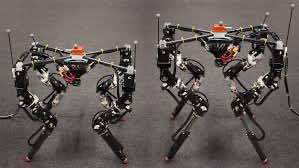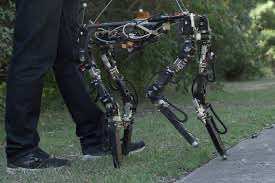Modern robots come equipped with locomotion systems to walk on all types of terrain. However, they tend to adopt one type of environment in specific. Now, the Norway University of Oslo researchers have created a four-legged robot capable of adjusting its leg-length and walking gait while on the move. This new feature allows the robot to encounter different kinds of surfaces on its own, a feature the team says enhances its performance and energy efficiency to an unmeasured extent.
The new robot’s name is Dyret, the word used for the animal in Norwegian. It is the first-ever robot to transform its morphology to meet best the conditions of the surface it walks on. Dyret recognizes different terrains with multiple sensors, cameras, and AI tools and then mechanically adjusts to the best suitable setting on its own.

“The robot continuously learns about the environment it’s walking on and, combined with the knowledge it gained indoors in the controlled environment, uses this to adapt its body,” says Tønnes Nygaard, who led the research.
The team began by training the robot on gravel, concrete, and sand. It was then tasked to walk on grass, which marked a new kind of surface for it. Upon testing the Dyret in the grass, researchers said it was one of the most difficult terrains because of several tufts and holes. However, the robot learned its best suitable leg-length to walk on such surfaces in no time.
“Shorter legs give better stability, while longer legs allow for a higher walking speed if the ground is sufficiently predictable,” stated team member Kyrre Glette.

The need to develop Dyret was felt when most of the conventional robots stand-still when the terrain is unknown and ask for a re-design or a manual change of settings. However, Dyret could do all the changes in its settings all on its own, without requiring any human assistance. The new robot could lay down its services in rescue operations and agriculture and could go on surfaces like mining operations. The new adaptable feature in Dyret enables it to become far more resilient and durable.

“Using our technology, the robot can adapt to one of its legs becoming weaker or breaking,” said Nygaard. “It can learn how to recover, whether through limping or decreasing the length of the other three legs.”
Its manufacturers have made adaptive technology available for all so that more robot developers could equip their models with the latest addition.
Have a look at the video below when Dyret was first in action in 2018. The latest research on the robot was published in the journal ‘Nature Machine Intelligence.’


